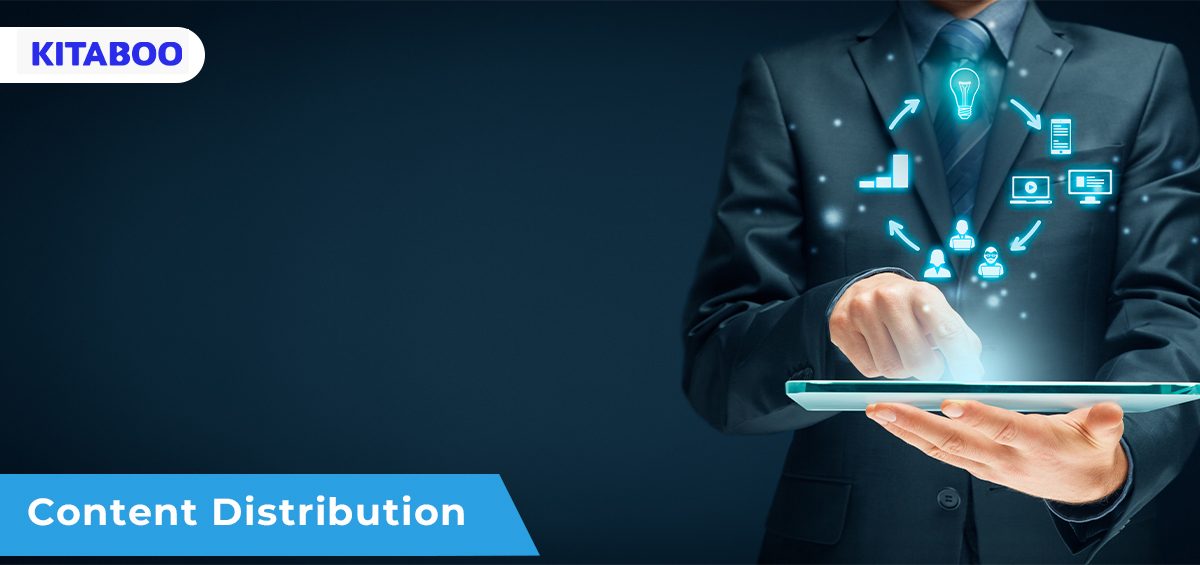The volume of content produced and uploaded on the internet is insane.
We create nearly 2.5 quintillion bytes of data each day at the current pace. In 2022 alone, around 333.2 billion emails and 500 million tweets were sent every day, while nearly 30,000 hours of videos were uploaded to YouTube every hour.
So, with consumers being bombarded with such a huge amount of data, how do you make sure that your content gets noticed?
The answer is by getting your content distribution right. An effective content distribution strategy enables you to get your content in front of the right audience at the right time and in the right way.
In this guide, you will learn all you need about content distribution, from types of content to distribution platforms, and how to create a winning content distribution strategy.
What is Content Distribution?
Content distribution simply refers to sharing, publishing, and promoting your content online through various channels and media platforms.
For instance, sending emails to your client list or sharing a post on LinkedIn all come under content distribution.
Content distribution is an integral part of content marketing as it helps get your content to the maximum number of people. Your content won’t be of much use until you are able to get eyes on it, no matter how well-created it is.
Thus, effective content distribution not only generates leads but also saves time and resources.
Types of Content for Distribution
The different types of content on the internet requires different content distribution platforms and plans. Let’s have a look at the most common types of content online:
Blog Posts
Blog posts are informative articles you post on your company’s website. A large number of potential customers check out your blogs before purchasing goods or services from you. Hence, blogs are important tools for converting leads.
eBooks
eBooks are long-form content pieces through which you can share your expertise and provide valuable information to your readers.
Most companies create eBooks as ‘gated’ content placed on their landing page. Visitors can only get access to the content after submitting their email addresses or numbers.
Once you get the potential customer’s email id or number, you can market your products more effectively. This makes eBooks a beloved content format for marketers.
Infographics
Infographics are the visual representation of information and data. They present a large amount of data effectively and efficiently so readers can easily understand it at a glance.
Make maximum use of infographics on your blogs and eBooks to increase your website traffic by up to 12%.
Video Content
It is a known fact that videos are the most engaging form of content, and their popularity is increasing every day. Around 72% of consumers prefer videos over textual content to learn about a company or its product.
There are tons of things you can share in video format. If you’re new to content marketing, you can always start with how-to videos, tutorials, brand content, case studies, and experiments that connect with your audience.
Case Studies and Success Stories
Case studies aim to show people the result of using your products and services and persuade them to purchase them. They are a great way to build confidence in your brand.
Pick a few happy customers from the past and share their journey from pain to gain on various content distribution platforms.
Types of Content Distribution Channels
The platforms and media where you share your content are as crucial as choosing the right content type. Specific content distribution platforms and channels vary depending on your content type, target audience, and resources.
However, you can generally divide the eBook distribution channels into three broad categories.
Owned Distribution Channels
Owned channels are the platforms and facilities that your company owns. Thus, you can control when and how to publish content on them.
Examples are your blogs, websites, social media profiles, email newsletters, etc.
Though these channels give you autonomy, your initial reach and engagement may not be as high as expected.
Shared Distribution Channels
This is when third parties share your content on their channels for free. They could be bloggers, influencers, journalists, review sites, etc.
These parties can promote your content through social shares, mentions, or as guest articles and product reviews. They help you reach new audiences while increasing your credibility and SEO ranking.
Paid Distribution Channels
If no third-party channels come to you, you can always go to them. Certain channels promote your content for a fee, such as paid social advertisements or paid influencer content.
Though these content distribution platforms come at a cost, they pay off by making your content more discoverable.
How to Create a Content Distribution Strategy
Now that you’re aware of the types of content and their distribution channel, all that’s left is to create a winning content distribution strategy. Here’s how!
Research Your Audience
The best way to get your content noticed is to align your promotion and distribution efforts with the behavior and habits of your target customers.
This requires extensive research into who they are, which media they prefer, how they interact online, and what their buyer journey looks like.
For instance, with more than 60% active users, Instagram and Youtube could be the most direct way to reach the Gen Z audience.
Select the Right Channel
You can promote different types of content through different channels. While paid channels can give you quick results, you must also focus on growing organically through your own channels for long-term success.
Taking various channels hand-in-hand could be a good approach for beginner content marketers.
Create and Distribute Content
You can either create content yourself or outsource it to freelancers or agencies. While creating content, you’ll have to ensure that they are optimized for the channel it will be shared.
For instance, Twitter calls for short and powerful copyrighting, while visually appealing posts with CTAs work well on Instagram.
Analyze the Results
Your job doesn’t get over with content distribution. You need to continuously monitor your performance to check the effectiveness of your distribution strategy.
Many distribution channels have inbuilt analytics that can help you gauge your performance. They allow you to identify your most performing content, so you can create more of it.
If the results are not in your favor, you may need to change the content type, channel, or entire strategy.
Conclusion
Your content distribution strategy plays a vital role in the growth and performance of your brand. So experiment with different content forms and content distribution platforms until you find the one that works best for you.
Also, keep the above tips in mind and take your distribution strategy to another level!
Discover How An Ebook Conversion, Publishing & Distribution Platform Can Help You
Kitaboo is a cloud-based content platform to create-publish & securely distribute interactive mobile-ready ebooks.
You May Also Like
-
-
The 7 Sins of Digital Content Distribution in 2024
Blog,Digital Publishing,eBook solution / January 11, 2024








